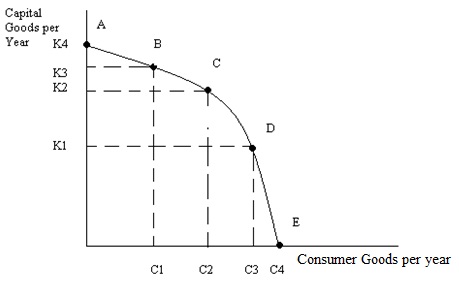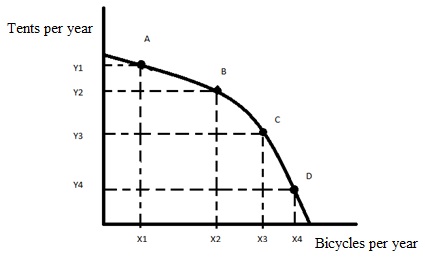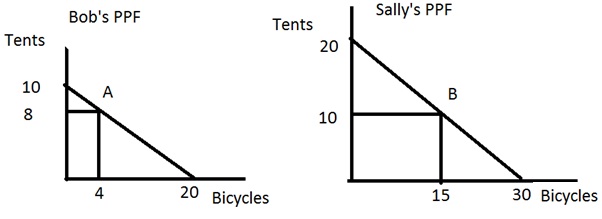Problem 1. In class there was a brief discussion of Greg Mankiw’s Ten General Principles of Economics. This question is based on those principles.
a. Principle #1 states that “People face tradeoffs.” Think about this statement and then express three different occasions within the first two weeks of class where you faced a tradeoff. Explain the situation and identify the tradeoff. How did you decide what to do in the situation?
b. Principle #4 states that “People respond to incentives.” Provide three examples of incentives you have faced and how you responded to those incentives.
c. Let’s return to Principle #4: “People respond to incentives.” Now, fast forward fifteen years and imagine that you are a parent (it could happen!). Express three outcomes you would like your child to achieve and then determine what incentives you will provide to help them achieve this outcome. Be thoughtful about this: that is, be “intentional” about what incentives you are going to offer in order to reach your desired outcomes. For example, suppose one of my goals is to teach my child to take good care of their possessions: I might offer them the following incentive-“For items we both view as important for you to have, I am willing to contribute 40% of the cost of the item, but you (the child) will need to contribute the other 60%.” (This is actually about what we did when raising our children: after the first bicycle which we provided, we let the kids trade their bikes and then we provided about half of what the additional cost for the upgrade to a bigger bike was. Each of our kids ended up loving their bikes because they viewed them as something they had earned and each of them took really good care of their bikes. People respond to incentives.)
Problem 2: Use the following figure of an economy’s production possibility curve to answer this set of questions. Assume this country has a fixed amount of resources, technology and time period in which they produce capital goods (plant and equipment that is produced this period in order to produce consumer goods next period) and consumer goods (goods that are produced and consumed this period).

a. Given the above graph, what is the maximum amount of capital goods this economy could produce? Is it likely this economy will choose to produce this amount? Explain your answer.
b. Given the above graph, what is the maximum amount of consumer goods this economy could produce? Is is likely this economy will choose to produce this amount? Explain your answer.
c. Suppose this economy is producing at point B in the above graph. What is the opportunity cost of this economy moving to point C? Remember that opportunity cost is measuring what you are giving up-in this case what does this economy give up when it moves from point B to point C? Make sure your answer provides units of measurement .
d. Suppose this economy is producing at point D in the above graph. What is the opportunity cost of this economy moving to point C? Remember that opportunity cost is measuring what you are giving up-in this case what does this economy give up when it moves from Point D to point C? Make sure your answer provides units of measurement.
e. What is the Law of Increasing Opportunity Cost? Does this PPF exhibit this law for both goods? Explain your answer.
Problem 3: Consider the following production possibility frontier of an economy that produces two goods, tents and bicycles:

a. On the above graph what is the opportunity cost of moving from point A to point B? In your answer be sure to identify the units of measurement for this cost.
b. Given the above graph, suppose you are told that citizens in this economy want to produce at the point (X2, Y1). What would you tell these citizens given the above graph?
c. Given the above graph, suppose the economy is currently producing at the point ((X2, Y3). What do you know with certainty about this economy given this information and the above graph?
Problem 4. The opportunity cost of going to college includes the cost of tuition, the cost of the textbooks a college student will purchase, and the salary that they give up in order to go to college. The opportunity cost of going to college does not include the cost of the food the college student eats or the cost of his living arrangement. Why are these last two costs not included as part of the opportunity cost of going to school?
Problem 5. Suppose that Bob and Sally produce bicycles and tents. The following graphs depict Bob and Sally’s production possibility frontiers for these two goods. Assume that Bob and Sally have identical amounts of resources, technology, and time in which to produce these two goods. Currently Bob is producing at point A on his PPF and Sally is producing at point B on her PPF. Bob and Sally both have linear PPFs.

a. Given the above graphs and given that Bob is producing at point A and Sally at point B fill in the following table providing the amount of tents (T) and bicycles (B) that are currently being produced.
Tents (T) Bicycles (B)
Bob
Sally
Total Production
b) What is Bob’s opportunity cost of producing one additional bicycle given the above graph?
c) What is Sally’s opportunity cost of producing one additional bicycle given the above graph?
d) Given your answers in (b) and (c), who has the comparative advantage in the production of bicycles? Explain in your own words what this means.
e) Suppose that Bob decreases his production of tents by 2 units while Sally increases her production of tents by 2 units. Both Bob and Sally are assumed to still be producing at a point on their PPFs. Given these changes fill out the following table showing what their new level of production of these two goods will be.
Tents (T) Bicycles (B)
Bob
Sally
Total Production
f) Use a number line to illustrate the range of acceptable prices for 1 bicycle that both Sally and Bob will agree to. Use a second number line to illustrate the range of acceptable prices for 10 tents that both Sally and Bob will agree to.
g) Draw the joint PPF for Sally and Bob measuring tents on the y-axis and bicycles on the x-axis. Make sure you identify the y intercept, the x intercept, and the coordinates of the “kink” in the joint PPF. In drawing this joint PPF:
• Make sure that the y-intercept shows the total amount of tents that Sally and Bob can produce if they both produce only tents;
• Make sure the x-intercept shows the total amount of bicycles that Sally and Bob can produce if they both produce only bicycles;
• Make sure the “kink” point shows the total amount of bicycles and tents that Sally and Bob can produce if each of them fully specializes according to their comparative advantage.
Problem 6. In the Foreward to Naked Economics Burton Malkiel makes a reference to economics as the “dismal science”. This term is attributed to Thomas Carlyle. Write a brief paragraph discussing why Carlyle referred to economics using this term. Make sure your paragraph convinces the reader that you have thought about this idea and that you have also read Malkiel’s commentary on it.
Problem 7. In Chapter 1 of Naked EconomicsWheelan writes “Is it fair for those of us who live comfortably to impose our preferences on individuals in the developing world.” Respond to this statement with a well-reasoned and thoughtful commentary: it does not matter what position you argue provided you make a logical, thoughtful response. Make sure you include at least one illustrative example in your answer.
Problem 8. In Chapter 1 of Naked Economics identify a statement that caught your attention and made you think. Copy this statement and then write a brief, but illuminating paragraph, about why you chose this statement. Your response should convince the reader that you have read the material AND thought about the material.
Problem 9. One skill set that I believe is incredibly valuable to have is the ability to summarize a long passage that you have read. To get this skill set however you do need to practice it! So, for this question I want you to outline the main points and supporting arguments that Wheelan uses in Chapter 1 of his text. Use standard outline form when you do this. (Guidance here: when I did the answer key I ended up with six major topics and a total of twenty-six separate entries in my outline. That is, my outline could easily fit on a single page of paper-and so should yours!)